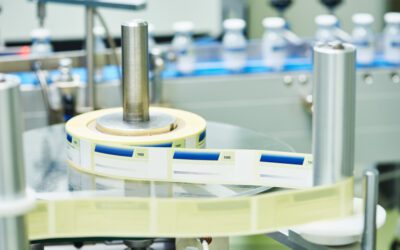“Positive” or Negative.” “Present” or “Absent.” “Detected” or “Not Detected.” To those of us in the food industry who routinely utilize qualitative detection methods to test for the presence of foodborne pathogens in food product samples, all of these are familiar terms. When creating a qualitative detection method, method developers will design the sample preparation steps, enrichment conditions, and detection procedures to produce a strict binary outcome: “yes” the foodborne pathogen was detected in the sample, or “no” the foodborne pathogen was not detected in the sample. However, more recently there is a trend that has been gaining traction in the food industry, which challenges the paradigm of how these qualitative detection methods are traditionally utilized. This trend, which has been termed “limits testing,” involves utilizing qualitative detection methods in a semi–quantitative manner, and has some very intriguing applications that many food industry professionals feel will have a strong impact on public health.
Meat and poultry products continue to be a predominant source of Salmonella foodborne illness cases. Based on data collected from 1998 to 2012, 44.7% of salmonellosis outbreaks were attributed to consumption of meat and poultry products (including beef, pork, chicken, turkey, and other meat and poultry) (1). Furthermore, Salmonella is estimated to cause over 1.2 million cases of foodborne illness each year in the United States (2) with an incidence rate of 15.3 per 100,000 people (3). In addition it is estimated to lead to over 19,000 hospitalizations and 378 deaths each year in the United States (2) due to foodborne transmission. Thus, arguably, Salmonella creates a substantial public health burden with regard to its presence in food products.
However, despite this evident public health burden, the United States Department of Agriculture Food Safety and Inspection Service (USDA–FSIS) currently does not consider Salmonella to be an adulterant of raw meat and poultry products, and thus does not enforce a “zero tolerance” policy for it, as it does for Escherichia coli O157:H7 and other Shiga–Toxin Producing E. coli in raw non–intact beef products. A common argument in support of this standpoint is that Salmonella is present in a variety of food products at low concentrations, and an individual is not highly likely to develop illness unless a certain threshold concentration of Salmonella is exceeded in the food product that he or she consumes. This amount of cells that must be consumed in order to develop illness is termed the “infectious dose.” Thus, negative impacts on public health are not likely to be realized unless a certain threshold concentration of Salmonella cells in the food product is exceeded, which then causes an individual to consume the “infectious dose” of Salmonella cells in the serving size of the food product that he or she eats. Indeed, consuming food from these lots that have concentrations of Salmonella that are above this threshold concentration will lead the individual to consume the “infectious dose” required, and thus will cause a negative public health impact to be observed. Therefore, eliminating these lots of food from the food supply should be the primary focus of Salmonella testing programs.
This is where the “limits testing” concept has utility. The premise behind “limits testing” is to use qualitative detection methods in a semi–quantitative manner in order to detect only those lots of food products that have foodborne pathogen concentrations that exceed the threshold concentration that would produce a negative public health impact. Rather than using the full enrichment time to reach the limit of detection for a qualitative detection method, which is theoretically 1 CFU per test sample portion, the limits testing approach uses an abbreviated enrichment time for the method in order to only detect food product lots that have higher foodborne pathogen concentrations, such as 1 CFU/g of the test sample. These concentrations are still unable to be detected with traditional quantitative plating methods, so at this point in time, the available techniques still necessitate an enrichment procedure. In principle, if a food product lot contains a higher concentration of a foodborne pathogen, the pathogen should be able to multiply to levels that are sufficient for detection when using an enrichment time that is shorter than the normal enrichment time for the method. With further fine–tuning on this abbreviated enrichment time, one can then narrow down the starting concentration of the foodborne pathogen in the food product to a tighter range, such that the qualitative foodborne pathogen detection method essentially becomes semi–quantitative. In turn, this helps the manufacturer to find those lots of food products that have these elevated concentrations of foodborne pathogens that will have the greatest negative impacts on public health and to focus their testing efforts on preventing those lots of food products from entering commerce.
An example of “limits testing” research was presented at the 2015 International Association for Food Protection Annual Meeting (4). In this study, the researchers focused on optimizing an assay, the Roka Bioscience, Inc. Atlas Salmonella SEN Detection System, to consistently detect Salmonella contamination levels in raw ground turkey amounting to 0.5 CFU/g and 1 CFU/g. Furthermore, the parameters were optimized to obtain results within the time frame of one production shift. Phase I of the study evaluated how enrichment conditions could be optimized to consistently detect each of these levels of contamination. In this particular study, the researchers investigated how 375 g samples of raw ground turkey could be enriched in Buffered Peptone Water at 1:1, 1:2, and 1:3 sample to media ratios at 35°C and 42°C for 3 h and 4 h of incubation (note the very abbreviated incubation time) in order to detect Salmonella at these set concentrations. Once the researchers were able to find a combination of conditions that worked well, they performed Phase II of the study, which further refined these enrichment conditions down to half–hour intervals in order to tighten the range of the known starting concentration of Salmonella in the food product sample. Once this was complete and several final sets of incubation conditions were set, Phase III of the study was completed to provide full validation of the different sets of conditions. In doing this, the researchers evaluated ten samples for each set of conditions in triplicate studies. Overall, the final outcome was that researchers were able to develop a “limits testing” based approach to accurately detect 1 CFU/g of Salmonella in a 375 g ground turkey sample within one working shift and with a high level of confidence.
Several more examples of this type of research exist, but this is a prime example of how this “limits testing” approach can be used to remove ground turkey lots with levels of Salmonella contamination that are high enough to be able to create a public health issue if they were to be introduced into the food supply. Salmonella is not currently considered to be an adulterant in such products, so focusing on removing these ground turkey lots with higher concentrations via a “limits testing” approach may ultimately be a more effective and impactful use of resources for manufacturers of these types of products as opposed to avoiding any sort of testing program because of the high frequency of positive samples that would be obtained with low concentrations of Salmonella that would not necessarily translate into a potential negative public health impact.
Overall, the concept of “limits testing” is one that is likely to be utilized more frequently in the future by the food industry due to its ability to discern those lots of food products that are expected to have a negative public health impact. This will likely help those manufacturers justify the implementation of testing programs for those pathogens that are frequently present in products at concentrations that are low enough such that they are not likely to create a public health issue, but that can create a public health issue if their concentration spikes up in a product for some particular reason. This will also provide them with scientifically–based justification not to have to treat testing programs for these pathogens as if they are “zero tolerance” based programs. Overall, this should likely help encourage manufacturers who currently avoid implementing testing programs for non–”zero tolerance” pathogens to implement testing programs that will still allow them to catch problematic product lots, but also be able to release product lots that are not expected to be problematic. Right now, many manufacturers avoid these situations outright, which can then possibly translate into a recall or foodborne illness outbreak because they did not do any sort of testing to be able to identify these problematic lots that can create a negative public health impact. Additionally from an operational standpoint, “limits testing” approaches will also help make sure that resources to dispose of affected products are directed in the proper fashion, and the reduced incubation times involved with “limits testing” will help manufacturers arrive at product disposition decisions much more rapidly. Therefore, there seems to be a great deal of potential that remains to be unlocked with “limits testing” approaches, and it seems to be a concept that promises to take a greater foothold as the food industry continues to modernize its food safety programs and focus on risk–based testing approaches that are aimed at improving public health.
References:
- Interagency Food Safety Analytics Collaboration (IFSAC) Project. 2015. Foodborne illness source attribution estimates for Salmonella, Escherichia coli O157 (E. coli O157), Listeria monocytogenes (Lm), and Campylobacter using outbreak surveillance data. Available At: https://www.fsis.usda.gov/wps/wcm/connect/df7eebf6–911c–47c4–aee6–36b60ea04663/IFSAC–Project–Report–022415.pdf?MOD=AJPERES. Accessed: 28 Nov 2016.
- Scallan E, Hoekstra RM, Angulo FJ, Tauxe RV, Widdowson M–A, Roy SL, Jones JL, Griffin PM. 2011. Foodborne illness acquired in the United States – major pathogens. Emerg Infect Dis 17:7–15.
- Centers for Disease Control and Prevention Foodborne Diseases Active Surveillance Network (FoodNet). 2016. FoodNet Surveillance Report for 2014 (Final Report). Available At: http://www.cdc.gov/foodnet/reports/annual–reports–2014.html. Accessed: 28 Nov 2016.
- Chaney WE, Wisniewski M, Noll N, Vaughn S, Puente C, Kougl J, Thompson M, Dreyling E, Becker M. 2015. Development of a limits–based pathogen test application for detecting specified concentrations of Salmonella enterica in ground poultry. Poster Presentation P1–56. International Association for Food Protection 2015 Annual Meeting, Portland, OR. 25–28 Jul 2015.



![Top 10 Reasons for a BRC Audit Non-Conformity [2025]](https://fsns.com/wp-content/uploads/2022/08/shutterstock_1033058215-1-400x250.jpg)